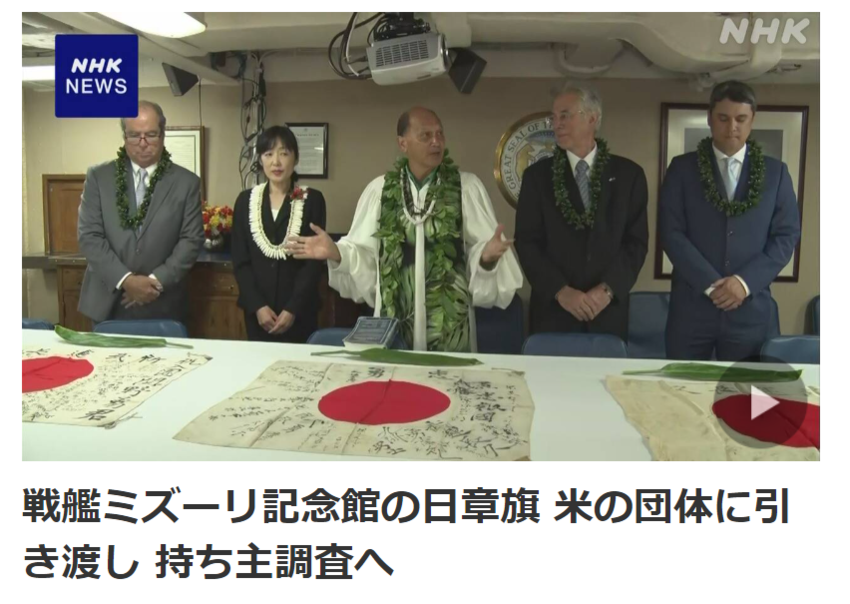WWII Japanese flags given to group for return to soldiers' families
Three Japanese flags kept at the Battleship Missouri Memorial in Hawaii have been donated to a group working to return World War Two relics to families of Japanese servicemen.
The flags were entrusted to the memorial at Pearl Harbor by former US servicemen and their families. A ceremony to transfer the flags to the OBON SOCIETY, a US based organization that returns war relics to families, was held at the memorial on Thursday.
The Japanese flags were inscribed with signatures and messages by family and friends, then given to departing servicemen. Men carried such flags into battle as good luck amulets.
The president of the Battleship Missouri Memorial, Michael Carr, referred to next year as the 80th anniversary of the end of World War Two.
Carr said, "This flag transfer becomes a symbol of our continued commitment to ensuring that the lessons of World War Two are never forgotten, that we strive for a future built on peace, mutual respect and understanding."
The co-founder of OBON SOCIETY, Rex Ziak, said: "This is the ship that's going around the world as the vessel that brought Japan to its knees." He went on to say, "now their thoughts have changed their feelings, and it is a simple unconditional friendship, the unconditional peace between US and Japan."
 https://www3.nhk.or.jp/news/html/20241004/k10014601081000.html?fbclid=IwY2xjawF-ZK5leHRuA2FlbQIxMQABHZFIPK6AhqgItNJ1HylCkVxEwDu8_kkLMqtf1S8_otCZWBN56P62gOVH4g_aem_ryN9H2A0_FhuHq_2XRkjyw
https://www3.nhk.or.jp/news/html/20241004/k10014601081000.html?fbclid=IwY2xjawF-ZK5leHRuA2FlbQIxMQABHZFIPK6AhqgItNJ1HylCkVxEwDu8_kkLMqtf1S8_otCZWBN56P62gOVH4g_aem_ryN9H2A0_FhuHq_2XRkjyw